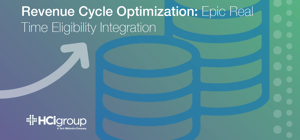Top 10 Most Popular Blog Posts of 2018
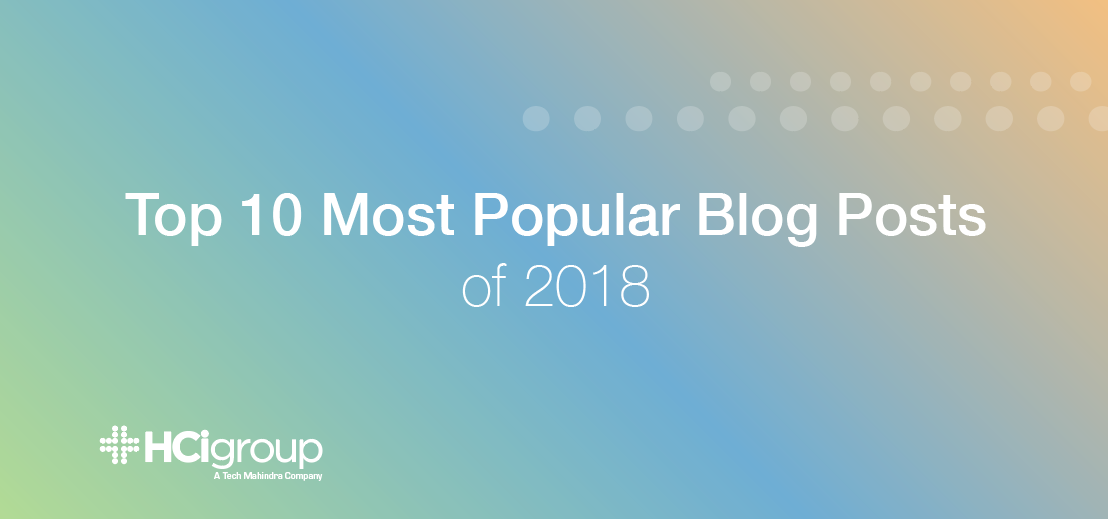
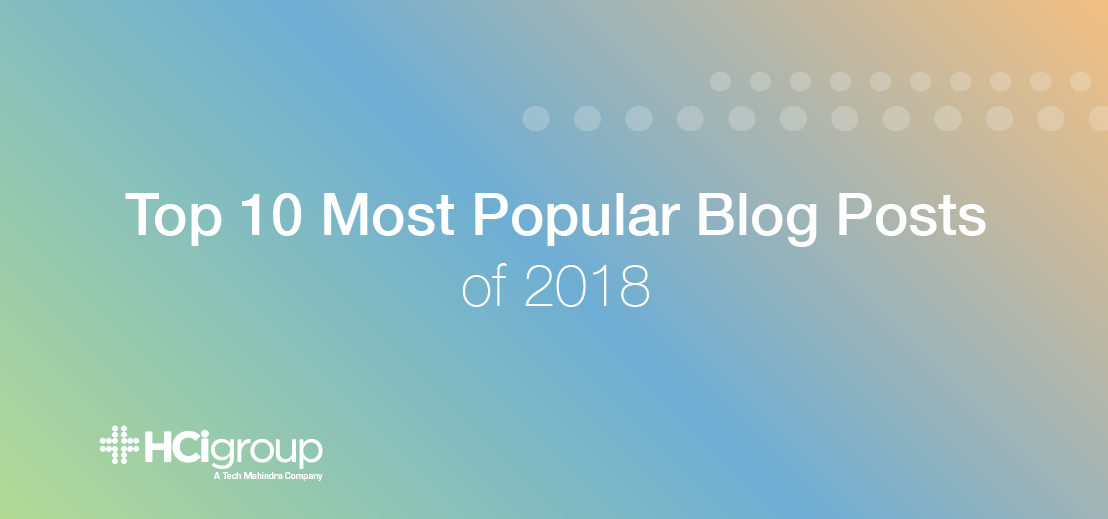 With 2018 at a close, we compiled our top 10 most popular blog posts of 2018, in one place. We hope that you enjoyed our posts from 2018, and we are looking forward to creating even more helpful content in 2019.
With 2018 at a close, we compiled our top 10 most popular blog posts of 2018, in one place. We hope that you enjoyed our posts from 2018, and we are looking forward to creating even more helpful content in 2019.
1) Healthcare IT Leaders Series: Tanya Townsend (Part One)
 This blog post is part one of two of an interview with Tanya Townsend on many questions about digital transformation in healthcare, including:
This blog post is part one of two of an interview with Tanya Townsend on many questions about digital transformation in healthcare, including:
- What are a few significant trends that you see impacting the healthcare industry today?
- How do you properly align your IT strategies with the overall business strategy of the organization?
- What technologies are you using right now that you are most excited about, and why?
Tanya gives her perspective on current trends in healthcare technology, aligning IT strategies with the rest of the organization and her journey to senior leadership.
2) EHR Training: Don't Forget These Seven Areas
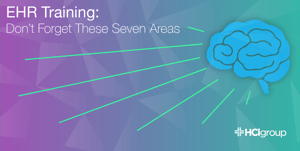 A successful EHR training program accelerates adoption, increases efficiency and improves care.
A successful EHR training program accelerates adoption, increases efficiency and improves care.
Proper planning is key to accelerating resources, increasing efficiency and improving care through a successful EHR training program. Position your program for success by planning for these “often forgotten” areas.
3) Revenue Cycle Management: Improving Efficiency and Increasing Revenue with Robotic Process Automation
 This post explores how robotic process automation can help improve efficiency and increase revenue within the revenue cycle process.
This post explores how robotic process automation can help improve efficiency and increase revenue within the revenue cycle process.
This blog post explores these topics:
-
Reduce Operating Costs
-
Increase Collections and Decrease AR Rays
4) Seven of the Biggest Concerns for Healthcare CIOs
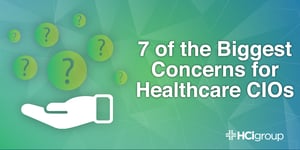
From protecting patient information to optimizing EHRs to improving the patient experience, CIOs must do much with relatively little.
This post covers their biggest concerns, including:
- Reducing Costs
- Going mobile
- M&A Activity
- Interoperability
- Maintaining Compliance
- Securing Data
- Digital Transformation
5) EHR Implementation: Solutions to Common Staffing Problems
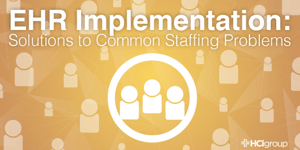
In this blog post, Rod Gamble, HCI's Senior Vice President - Global Cerner Service Line highlights solutions to common staffing problems for EHR Implementations.
Some of these solutions include:
- Preparation
- In-house Expertise
- Team Dynamics
- Recruitment
6) Virtual EHR Training: 6 Benefits That You Can't Ignore
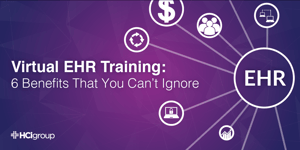
EHR training can strain budgets, stress users and squeeze your healthcare organization’s resources. But none of this has to happen.
You don’t have to stretch to hire enough trainers or struggle to schedule enough sessions, nor do you have to scramble to get ample space for all of your training.
Healthcare organizations are turning to virtual EHR training because of the affordability, efficiency and effectiveness that it offers. You can also minimize productivity losses, improve adoption rates and increase the return on your investment in your new EHR system by allowing users to participate in online, instructor-led training.
7) 3 Essential Elements for Post-Go-Live Training
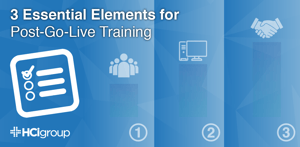 EHR training shouldn’t end with go-live.
EHR training shouldn’t end with go-live.
Thorough, ongoing training is essential for maximizing the return on your investment in your electronic health record system.
Increases in efficiency, improvements in care, and reductions in costs come through the continuous learning, refinement and implementation of best practices in using your EHR. Effective post-go-live training helps you reap these benefits.
This blog also addresses:
- Reserving Post Go-Live Training Resources
- Resolving Access Issues
- Ongoing Opportunities
8) Revenue Cycle Optimization: Epic Real Time Eligibility Integration
As patient out of pocket responsibility continues to rise, the quality of the patient experience, consumer loyalty, and ultimately clinical outcomes depend on accurate insurance verification. Most Epic customers have implemented RTE but it may lack the details your staff need to select the correct plan. If errors in coverage selection are being identified after service, it’s likely resulting in denied claims and impacting your self-pay collections.
The benefits discussed include:
- Plan Mapping
- Message Chaining
- Discovering Coverage
- File Information
- Highlight Information
9) How Blockchain can be used in Healthcare
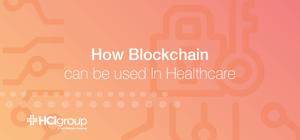 Blockchain — this technology has the potential to truly redefine trust between individuals and institutions. Blockchain is often called the “Internet of Trust”, and this is enabled by the ability to perform transactions and other functions with complete confidence in the identity of the participants and the value and the authenticity of the transaction or work that is being performed or processed.
Blockchain — this technology has the potential to truly redefine trust between individuals and institutions. Blockchain is often called the “Internet of Trust”, and this is enabled by the ability to perform transactions and other functions with complete confidence in the identity of the participants and the value and the authenticity of the transaction or work that is being performed or processed.
Blockchain is essentially a chain of digitally bundled blocks of information — safeguards patient information by making data more permanent, secure and traceable. Over half of healthcare executives — a reported 56 percent— anticipate implementing a commercial blockchain solution by 2020. Here are just a few examples where blockchain’s greater potential in healthcare is beginning to emerge.
10) Project Spotlight: Calderdale & Huddersfield NHS Foundation Trust (UK), Part 3 - Mandy Griffin, Managing Director - Digital Health
 This is part 3 of our 3 Part Project Spotlight featuring Calderdale & Huddersfield Foundation Trust (CHFT) in the United Kingdom. The HCI Group played an instrumental role in supporting this large Cerner Implementation. Part 3 features CHFT Managing Director of Digital Health, Mandy Griffin's perspective one of the most successful EPR Implementations to date in Europe.
This is part 3 of our 3 Part Project Spotlight featuring Calderdale & Huddersfield Foundation Trust (CHFT) in the United Kingdom. The HCI Group played an instrumental role in supporting this large Cerner Implementation. Part 3 features CHFT Managing Director of Digital Health, Mandy Griffin's perspective one of the most successful EPR Implementations to date in Europe.
Bradford Teaching Hospitals and Calderdale and Huddersfield are working together to improve healthcare across the north of England through a new joint electronic patient record. Professor Clive Kay, Chief Executive at Bradford Teaching Hospitals, told Digital Health News the deployment represented "the largest deployment of an EPR system by Cerner in Europe to date - and we have been told it has been one of the most successful."
The following is a full transcription of the video interview with CHFT Managing Direction of Digital Transformation, Mandy Griffin.

